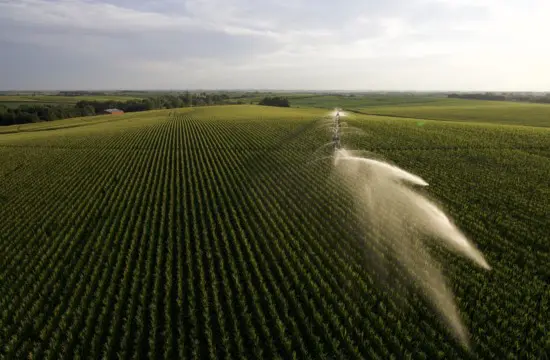In the Midwest, 50 million acres of cropland rely on subsurface tile drainage to reduce water table levels and remove excess water from fields. This allows growers to get a jump on spring cultivation and planting, and gives them access to the fields even during wet parts of the season. Additionally, tile drainage helps decrease surface runoff and loss from erosion.
In some fields, subsurface tile drainage is necessary to maintain moisture levels in the field. While certain areas of the country have soils with good drainage properties, others need some assistance, such as in low lying areas with high water tables or soils with low permeability.
It’s important to note that the top two inches of soil also contain a substantial amount of nutrients, including nitrogen and phosphorus; so by reducing erosion and runoff through the use of tile, you’re saving the loss of those nutrients.
However, there are downsides to using tile drainage – one of the biggest being the increased potential of nutrient loss. Reducing the amount of water on the surface of the soil decreases the amount of runoff and erosion, which in and of itself is beneficial, as it reduces the amount of nitrates and phosphites in local bodies of water.
But water has to go somewhere, and that somewhere is within the soil. At first this sounds positive – isn’t that where we want water in be, in the soil? The answer is yes, but only to a degree. You see, soil contains macropores, pathways created by root holes, soil cracks and earthworms that create a direct route to the tile lines. As most of us are aware, as more water is added to the soil, whether it be from precipitation or subsoil drainage, the chances of nutrients being leached deeper into the soil increase, moving nutrients through these pathways and away from crop roots that need them.
The good news is, as time passes and knowledge and technology advance, we’re discovering new ways to manage the water table in order to achieve the drainage we need without risking an increase in nutrient loss. Controlled tile drainage allows farmers to adjust the height at which in-line control structures begin to remove water from the field. These slotted drain tubes can be set higher during the winter months to reduce water and nutrient loss through drainage, and lower in the spring after planting to avoid flooding in the field.
With the right management practices, it is possible to utilize subsurface drainage while reducing the risk of nutrient and water loss. The key is to slow the movement of nutrients through the soil profile to prevent them from reaching tile lines. This movement happens primarily through the macropores mentioned above.
Applying nutrients in ideal weather conditions also helps control uptake and nutrient movement, as it reduces the risk of loss through high levels of precipitation or moisture. Timing is also key – applying close to the time of crop uptake ensures that the plant is getting the nutrients it needs, and those elements are not being washed away through the tile lines.
For growers in certain areas, it’s almost impossible to get around the necessity of tile drainage in exchange for better nutrient management. Luckily, there are ways to manage nutrients while still reaping the benefits of drainage in the field. With the right application techniques and timing, your crops can still produce high yields and get the nutrients they need while growing in a well-drained field.


